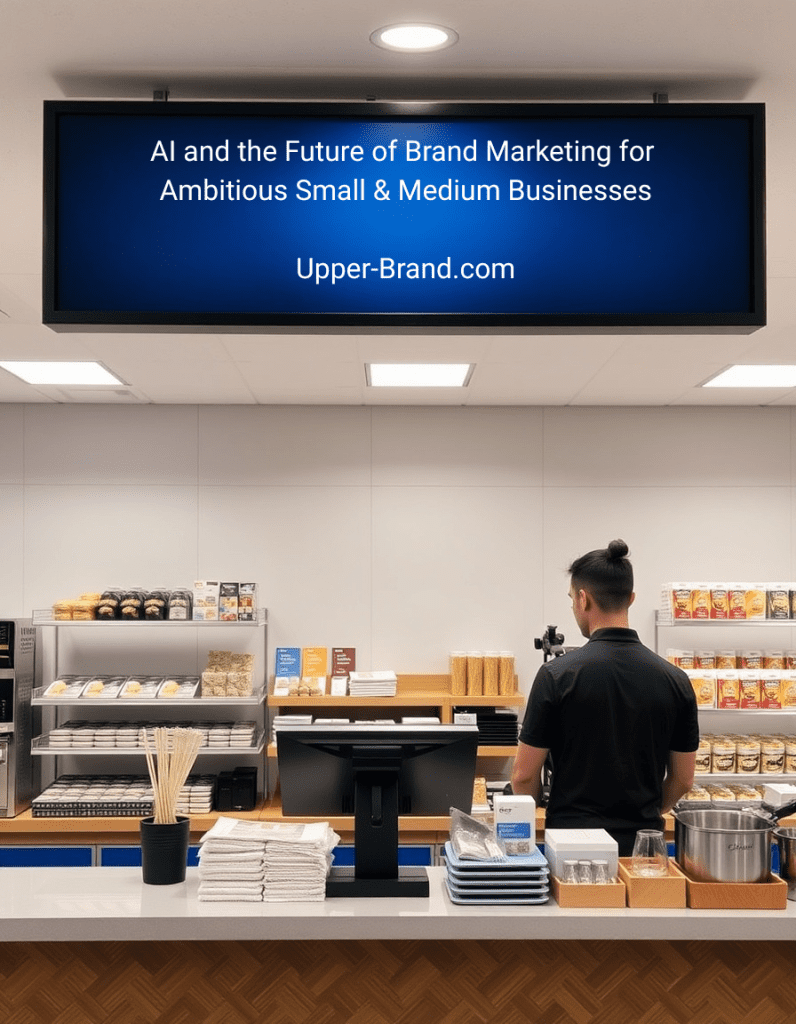Strategic cyber resilience in a time of intelligent threats

The era of proactive trust
Consumers swipe, tap, and voice-command their way through life with an assumption that every interaction is safe by design. Yet behind this smooth experience is a volatile battlefield where artificial intelligence turbocharges cybercrime. The FCC’s updated Small Business Cyber Planner 2.0 and new CISO-level forums broadcast a clear signal to marketing leaders: resilient security is no longer a backstage function. It is a front-row feature that defines brand relevance, fuels customer loyalty, and unlocks new growth channels.
Intelligent threats are scaling faster than campaigns
Artificial intelligence has turned the hacker playbook into a SaaS model. Automated reconnaissance bots scrape GitHub commits and forgotten WordPress plugins in minutes. Generative language models craft spear-phishing emails that mimic your chief marketing officer’s tone, complete with brand-approved emojis. Deepfake audio clones a CFO’s voice, authorizing a six-figure wire transfer before lunch. Verizon’s 2025 Data Breach Investigations Report confirms the velocity: time to compromise on exposed assets has cratered from forty-eight hours in 2023 to under eight hours this year.
Federal guidance raises the competitive baseline
The Cyber Planner 2.0 divides security into five actionable pillars: privacy governance, data security, network protection, mobile device oversight, and incident response. Paired with NIST’s Cybersecurity Framework 2.0 and CISA’s free vulnerability scans, the toolkit democratizes enterprise-grade defenses. Brands that embed these controls signal operational maturity to investors, partners, and privacy-savvy consumers. Upper-Brand research shows that seventy-three percent of Gen Z buyers favor labels that publish transparent security metrics alongside sustainability data. Compliance is no longer a checkbox; it is content.
Cyber resilience as marketing’s new KPI
Smart marketers already treat breach prevention as a growth lever. When Etsy wrapped its two-factor authentication rollout in playful illustrations, login completion rates spiked and daily active sellers shared screenshots, driving earned media impressions. Shopify’s quarterly trust report generated more LinkedIn engagement than its product-feature teasers. In a TikTok universe where authenticity wins attention, showcasing security diligence delivers brand-safe virality.
Five pillars of visionary security storytelling
- Predictive threat intelligence
Replace rear-view monitoring with machine learning platforms that flag anomalies before they erupt. Promote those capabilities as part of your value proposition. According to Gartner, brands that publicize predictive defenses see a fourteen percent lift in conversion among high-spend segments. - Zero-trust architecture blended with zero-friction UX
Customers crave one-tap checkout and passwordless login. Build journeys that delight users while verifying every device and session on the back end. Apple’s passkey adoption proves that frictionless security can become a headline feature, not a hidden filter. - Secure-by-design product launches
Threat modeling should sit beside wireframes during sprint reviews. A direct-to-consumer health-tech startup grew email sign-ups by eighteen percent after leading its launch story with data-encryption visuals, not feature lists. - Data-ethics transparency
Publish your data-retention timelines, anonymization methods, and AI-model guardrails. Adobe’s Content Credentials badge highlights provenance and transforms an esoteric safeguard into a consumer-facing trust signal. - Continuous human enablement
Gamify phishing simulations with leaderboards and micro-rewards. Nike cut click-through rates from fourteen percent to two percent in six months by turning security drills into company-wide challenges on its internal social feed.
Trend forecast: 2025 to 2027
Cybersecurity merges with ESG. Investors increasingly weigh digital safety metrics alongside carbon targets. Early adopters that report both will attract sustainability-minded capital.
Secure experience platforms emerge. Martech suites will embed user-verification widgets directly into journey orchestration, ensuring personalization and protection run in tandem.
Collective defense networks grow. Competing companies will share anonymized threat intelligence over blockchain channels, shrinking attacker dwell time across entire verticals.
Ethical AI seals become mainstream. Third-party certifications that validate model integrity will appear next to PCI badges, helping shoppers identify safe experimentation zones.
Quantum-ready encryption enters pilot marketing. Brands will tease post-quantum cryptography pilots as futurist proof points, positioning themselves as guardians of long-term privacy.
Metrics that translate security into revenue
- Secure conversion rate: percentage of transactions completed with multifactor authentication.
- Trust-based churn reduction: customers retained after publishing a transparency report.
- Breach cost avoidance: estimated losses mitigated through tabletop drills versus industry averages.
- Social amplification lift: engagement delta on security-centric posts compared to routine product updates.
By tying these numbers to pipeline impact, marketing and security leaders can co-author budget narratives that resonate in boardrooms.
Blueprint for immediate action
- Conduct a Cyber Planner 2.0 sprint, assigning each pillar to an executive sponsor.
- Map Planner outputs to NIST functions, then translate the roadmap into a content calendar that highlights milestone wins.
- Enlist CISA’s free vulnerability scans and showcase remediation stories in blog posts and investor decks.
- Align product, design, and security teams under a single zero-trust OKR, measured by reduced login friction and increased secure conversion.
- Launch a quarterly “trust talk” livestream where the CISO and CMO unpack security progress and answer real-time questions.
Conclusion: resilience is the ultimate marketing edge
The age of intelligent threats demands intelligent storytelling. Brands that fuse predictive security with bold narratives will own the next wave of consumer confidence, outperforming rivals still treating cyber resilience as an IT line item. In the experience economy, trust is trend currency. Spend it wisely, grow it fast, and watch your market share climb.
Written by Lina Torres for Upper-Brand.










